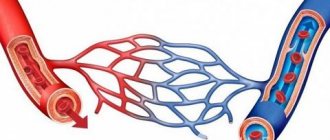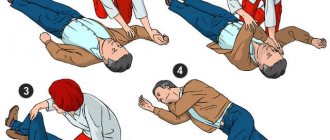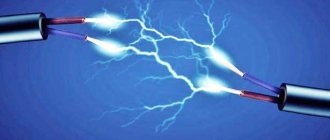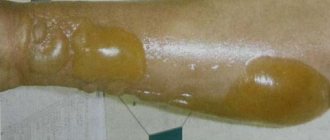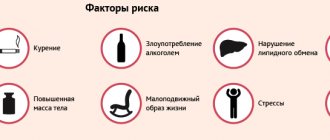Electrical injury is an injury resulting from a person being struck by electric current or lightning. A potential threat to humans is represented by a current strength of more than 0.15 Amperes, as well as direct and alternating voltages of more than 36 Volts. The consequences of electrical injuries can take a variety of forms - from minor burns to cessation of blood circulation, breathing and loss of consciousness, which, accordingly, often causes death. In almost all cases, exposure to current greater than normal is accompanied by damage to the skin, mucous membranes and bones at the points of entry and exit of the electrical discharge. The central and peripheral nervous systems are also affected.
Types of electrical injuries
Electrical injuries vary according to the location of their occurrence, the nature of the injury (local and general electrical injuries) and the nature of the impact of electricity.
Depending on the place of occurrence, the following types of electrical injuries are distinguished:
- Production;
- Household;
- Natural.
According to the nature of the electric shock to a person, they are distinguished:
- Local electrical injuries - electroophthalmia, burns, metallization of the skin (penetration under the skin and melting of small metal particles under the influence of an electric arc), mechanical integrity violations;
- General electrical injuries are electric shock to various muscle groups, accompanied by respiratory and cardiac arrest, as well as convulsions.
Local electrical injuries occur due to the impact of a short circuit on a specific part of the body. General electrical trauma is the result of the direct action of current from the moment it passes through the entire human body. When struck by lightning, along with the symptoms inherent in a general injury, hearing and speech impairment occurs, and dark blue spots appear on the skin.
Depending on the nature of the impact of electric current, there are the following types of electrical injuries:
- Instant – receiving an electrical discharge that exceeds the permissible level in a matter of seconds. Such an injury is accompanied by injuries that are dangerous to health and life, so the victim needs urgent resuscitation and surgical care;
- Chronic – the effect of electrical voltage on a person is long-term and imperceptible. For example, people who work near high-power generators suffer from chronic electrical injuries. In this case, the lesion is characterized by sleep and memory disturbances, increased fatigue, tremors, headaches, dilated pupils and increased blood pressure.
Biological effect of current
It consists of excitation of striated (striated) and non-striated muscles, nerve receptors and conductors, glandular tissue, etc. Clinically, this is manifested by tonic spasms of the striated muscles, which can cause respiratory arrest, avulsion fractures and dislocations of bones, spasm of the vocal cords, etc. Tonic contraction of non-striated (non-striated) muscles leads to increased blood pressure, spontaneous urination and defecation. The normal bioelectric conductivity of the heart, the functions of the endocrine glands are disrupted, the content of protein fractions of the blood changes, etc.
Causes of electrical injuries
In most cases, the causes of electrical injuries are direct contact with live elements of electrical installations and work with them without removing the voltage in advance. In this case, the injury rate is 80-90%. Negligence and inattention are the main causes of electrical injuries: unsatisfactory insulation condition, untimely shutdown of current, interruption of voltage supply.
In other words, the causes of electrical injuries can be classified as follows:
- Technical – equipment malfunction, improper operation;
- Organizational – non-compliance with safety rules at home and at work;
- Psychophysiological – fatigue, inattention caused by various reasons.
The impact of lightning is classified as a separate group as an objective cause.
As a rule, in production, incidents occur most often at the time when workers finish or begin a work shift, that is, during shift changes, as well as in the morning. In the first option, the key factor is elementary fatigue, and in the second - the peculiarities of planning the coming working day, since it is in the morning hours that the largest number of works with electrical equipment occurs.
Thermal effect
According to the Joule-Lenz law, the thermal effect of current depends on tissue resistance, current strength and time of contact with it. The amount of heat generated by the passage of current is proportional to the product of the square of the current (in amperes) by the resistance (in ohms) and time (in seconds). Current strength, according to Ohm's law, is inversely proportional to tissue resistance. The contact area also matters: the smaller the area, the greater the current density, and the more electrical energy is converted into thermal energy in a certain area of the body.
The thermal effect of the current causes a burn with tissue necrosis to charring. Skin and bones are more damaged because their density and resistance are greater than those of other tissues. Sometimes X-rays show characteristic changes in the bones in the form of a pearl necklace, which occurs due to the melting of bone tissue and the release of calcium phosphate.
The mechanical (dynamic) action of high-power current can lead to tissue delamination, ruptures, even to the separation of body parts. This is due to the fact that high voltage current, in addition to thermal effects, has significant mechanical energy, which gives an explosive effect. The increased air pressure during an explosion can throw a person to the side.
Help with electrical injuries
A victim of an electrical discharge needs emergency assistance, which involves, first of all, disconnecting the source of damage - de-energizing the device. To do this, you need to press the switch or turn the switch and turn off the plugs.
When providing assistance in case of electrical injury, it is necessary to take precautions: remove wires from the injured person only with insulated tools. Any other items are also suitable for this purpose, but they must be dry. If possible, operations should be performed with rubber gloves. If the wires have not yet been disconnected, it is strictly forbidden to touch the person affected by the current with unprotected hands.
The victim must be placed on a flat surface, doctors must be called as soon as possible and the following steps must be taken to help with an electrical injury:
- Check the person’s pulse, and if it is absent, perform an indirect cardiac massage, since the injury has caused circulatory arrest;
- Check breathing - if not, perform artificial respiration;
- If there is a pulse and breathing, place the victim on his stomach, turning his head to the side. In this position, a person is able to breathe safely, otherwise there is a high probability that he may choke on vomit;
- It is very important to free a person from tight clothing, as well as to prevent hypothermia. To do this, you need to cover it with heating pads or cover it with warm, dry clothes (blankets);
- If burns occur as a result of an electrical injury, they should be covered with a dry and clean bandage. If the hands and feet are affected, rolled cotton swabs or bandages should be placed between the fingers;
- Examine the victim to identify other injuries and provide assistance if any;
- If the victim is conscious, give him to drink as much liquid as possible, preferably plain clean water.
Even if a person’s condition after an electrical injury does not show serious symptoms at first, in any case he needs urgent hospitalization, since irreversible disruptions in the body can occur at any time. Timely assistance with a high probability can bring a person back to life even with a strong general electric shock.
Electrochemical effect
When an electric current passes through tissue, the cells' ionic balance and biological potential are disrupted. Electrolysis due to the polarization of cell membranes leads to coagulation of proteins on the anode side (the accumulation of positively charged particles causes an acidic reaction leading to dehydration and the transition of soluble proteins into a gel) and liquefaction necrosis on the cathode side (an alkaline reaction causes swelling of colloids). In addition, aggregation of platelets and leukocytes occurs, conglomerates of which can cause thrombosis of small vessels and thromboembolic complications (in the lungs). The greatest electrochemical effect has direct and low-voltage alternating current.
Measures to maintain vital functions during burns
After providing the necessary assistance to a person who has received an electrical injury of the 2nd, 3rd or 4th degree of severity, he should be immediately taken to the traumatology or surgical department of the hospital. There the patient will receive qualified medical care. In case of electrical injury of the 1st degree of severity, hospitalization is not always necessary.
Every person who has received an electrical injury must be vaccinated against tetanus!
Therapeutic inpatient care for a victim of electrical injury includes:
- Local treatment of burned areas of the body.
- General treatment aimed at maintaining and restoring all disturbed systems and functions of the body.
As a local anti-burn measure, sterile bandages soaked in disinfectant solutions are applied to the entry and exit points of electrical discharges.
Subsequently, burns on the skin are exposed to ultraviolet irradiation to facilitate the process of death of tissues susceptible to necrosis and to accelerate the restoration of healthy epithelium. Patients are also prescribed baths with a solution of potassium permanganate, and medicinal regenerating bandages are applied to the burned areas.
If the resulting skin defect requires correction, the patient undergoes plastic surgery!
In parallel with local treatment of burns, intensive infusion therapy is carried out to normalize cardiac activity and restore both central and peripheral hemodynamics. Doctors also prescribe anti-shock and oxygen therapy, sedatives and antihypertensive drugs to patients.
Basically, all drugs are introduced into the patient’s body through intravenous or intramuscular injections, as well as through droppers!
On the first day, the amount of drugs administered intravenously, taking into account the severity of the shock, is from 30 to 80 milliliters per kilogram of the patient’s body weight. In this case, urination is monitored hourly. Normally, the victim should produce about 1.5 -2.0 ml/kg of urine.
On the second and third days, the volume of drugs infused by infusion is reduced by approximately 30 percent. Among other drugs, the victim must be given heparin, vitamins, painkillers and heart medications, drugs to reduce arrhythmia, antispasmodics and adrenergic blockers. The most commonly used electric shocks are:
Ringer's solution.- Hemodez.
- Reopoliglyukin.
- Sodium bicarbonate.
- 10% glucose solution.
- Plasma and other protein preparations.
- Vitamin C.
- ATP.
- Eufillin.
- Troxevasin.
- Lidocaine.
- Nitroglycerine.
- Cocarboxylase.
- Korglykon.
If the patient has wounds in the skull and has experienced prolonged loss of consciousness, he requires enhanced dehydration therapy!
In the presence of lesions of the extremities, nicotinic acid and papaverine with novocaine solution are used.
Amputation of limbs is done as a last resort - in case of irreversible tissue necrosis!
Electrical trauma with deep lesions of the muscle fascia often requires surgical intervention in the form of necrotomy, dissection and drainage of tissue.
Treatment of electrical burns
General treatment includes a complex of remedies. If blood circulation is impaired and there is cerebral edema, dehydration therapy is prescribed (40% glucose solution, 20% mannitol solution, 25% magnesium sulfate solution), head cooling, and sometimes a spinal puncture; for psychomotor agitation - sedatives. Infusion therapy and blood transfusions are used to correct acidosis.
Active general treatment should be combined with local treatment . Local treatment is started only after the patient has recovered from a serious condition. Its main goal is to promote rapid cleansing of wounds from necrosis, prepare the patient for surgical treatment, as well as reduce pain and prevent purulent complications. If there is moisture in the wound and scab, apply a drying bandage. In case of suppuration, dressings are done daily or every other day with local use of antiseptics, antibiotics and sorbents.
In case of dry necrosis on the extremities, decompression necrotomy is performed during the first two days. After demarcation of necrotic tissues, necrectomy and osteonecrectomy are carried out in stages, and when there are indications, amputation and disarticulation. Sometimes it is necessary to ligate the affected artery along its length to prevent possible bleeding.
Autodermoplasty of burn wounds is carried out according to the same principles as for thermal burns. Abscesses and interstitial phlegmons are opened, drained and treated according to the principles of general surgery. Patients with electrical burns, especially of the hands and lower extremities, require long-term rehabilitation treatment, prosthetics after amputations, repeated reconstructive surgeries, etc. Sometimes they lose professional performance and even become disabled.
Local impact
Local electrical trauma violates the integrity of human skin and tissues, often the damage reaches the bones. Injuries occur due to short-term exposure to electric current or arc. Most cases end favorably with a violation of the integrity of only the upper skin.
The danger of such damage lies in the unknown reaction of the body. The location of the injury and the extent of the spread of the burn are important. Local electrical injuries, as usual, can be completely cured; they do not affect the subsequent life of the victim in any way - there are no consequences of electrical trauma with proper treatment.
Death from local trauma is rare, but quite possible. It depends on the body's reaction to the traumatic action. The fatal outcome is not a consequence of electric current, but a complication after a large burn that penetrated deep into the main part of the integument of the human body.
Characteristic signs of electrical injury manifest themselves in different ways:
- there is redness on the skin and the burn is obvious;
- in rare cases, injuries manifest themselves as electrical signs;
- in exceptional cases, no more than 3% of the number of injuries of this kind, metallization of the skin occurs;
- electroophthalmia or, in other words, eye damage - occurs extremely rarely;
- Mechanical damage may occur.
Local electrical injuries often manifest themselves in a mixed way, combining almost all signs of damage. In this case, they are accompanied by extensive burns and minor local manifestations.
How is the disease diagnosed?
The characteristic signs that appear in him will help you understand that a person has suffered from an electric shock.
In case of a mild electrical injury, the victim experiences:
- Dizziness.
- Fainting.
- Impaired vision, smell and hearing.
- Frustration, lack of strength, or, conversely, an excited state.
- Neurotic reactions.
Severe electrical injury can be recognized by the following signs:
- Cramping movements and soreness in skeletal muscles.
- Respiratory spasm, up to asphyxia.
- Drop in body temperature and pulse.
- Specific marks on the skin, the so-called “current signs”, marking the points of entry and exit into the victim’s body of an electrical discharge. These points are usually gray, round and dense. They rise slightly above the surface of the skin. In very severe cases, deep tissue melting occurs, right down to the bones.
- Headache and heart pain.
- Cardiogenic shock.
- Paralysis.
- Post-traumatic retrograde amnesia.
When injured by a lightning strike, the following symptoms are observed:
- Blindness.
- Temporary muteness and deafness.
- Feeling of fear.
- Headache.
- Photophobia.
- Cardiac and respiratory paralysis.
- "Imaginary" death.
The more serious the injury, the more pronounced the specific symptoms appear.
In some cases, electric shocks lead to instant death of the patient!
Local signs of tissue damage by electric current
In the area of input and output of low-voltage (560-1000 V) current, as a rule, its traces remain in the form of typical marks (on the tufts of fingers, palms, feet). They are clearly limited, have a round or oval shape, and sometimes the shape of the contours of the object through which contact with the current occurred. Electrical burns are classified according to the same principle as thermal burns. Electrical burns of the first degree also occur - redness and swelling of the skin.
With superficial electrical burns, serous or hemorrhagic blisters can form, the bottom of which is always necrotic in the dermis. These burns are accompanied by severe swelling and an inflammatory reaction of the tissues.
High-voltage current usually causes lightning-fast, deep and extensive coagulative tissue necrosis, so the area affected by the current is covered with a crust - a scab of gray, bronze or black color. Tissues (tendons, muscles, nerves, blood vessels and bones) are affected to a considerable depth in the form of a cone, expanding in depth. The burn area is insensitive and painless, which is due to damage to the nerve endings.
24-36 hours after the injury, the skin around the necrosis turns red, swells and remains that way for quite a long time. Clinically, it is initially impossible to assess the depth of tissue damage. This can only be determined with necrotomy and necrectomy. Bones (distal limbs, head, etc.) are affected primarily at the site of current action.
Changes in the bone can be detected radiographically no earlier than 3 weeks after the injury. Thrombosis of small veins and arteries sometimes leads to secondary tissue necrosis, and lesions of the main arteries and coagulation thrombosis during (popliteal and brachial arteries) - to ischemia and secondary necrosis of the peripheral segment of the limb.
During conservative treatment of patients with electrical burns due to infection of molten muscles (liquation necrosis), abscesses may form and move to intact adjacent tissues.

